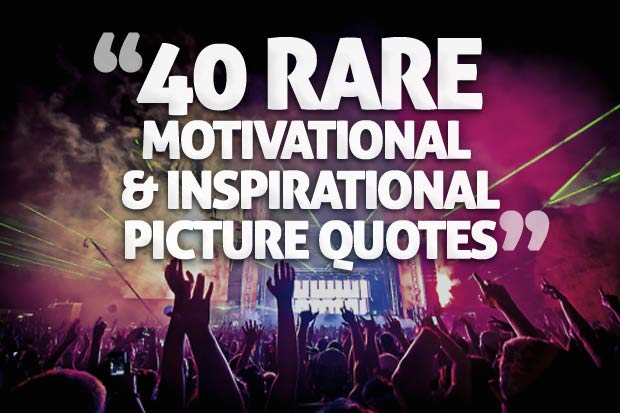Entrepreneurs
Why Your HR Department Can’t Afford to Ignore AI Any Longer
When every aspect of business demands the productive use of AI, why should HR departments fall behind?

Gartner reveals, “76% of HR leaders believe that if their organization does not adopt and implement AI solutions, such as generative AI, in the next 12 to 24 months, they will be lagging in organizational success compared to those that do.”
When every aspect of business demands the productive use of AI, why should HR departments fall behind the race? AI in human resources can help companies drive valuable decisions about recruitment, retention, and employee growth.
At its most basic level, AI automates administrative tasks like benefits administration and payroll handling. However, advanced AI is capable of handling tasks that are much more complex than payroll and benefits.
It has the power to help create new policies and job descriptions, answer interview questions, run objective performance evaluations, boost employee retention, keep security risks at bay and so much more. Here, we learn why AI is the partner HR departments of today need.
The Use of AI in Different HR Process
Fortune Business Insights reveals that the global HR technology market is projected to expand from $24.04 billion (2021) to $35.68 billion (2028). What does this mean for companies across the world?
They are likely to shift their focus to AI to ensure business productivity and lower costs. Here are a few of the many HR areas that deploy the use of AI for faster and more efficient processes today:
Recruitment
AI helps HR professionals spot the right talent by analyzing mountains of resumes and aligning them with job descriptions. From extracting video interview insights to running personality assessments, evaluation processes continue to get increasingly AI-driven.
This only makes sense because doing so helps HR departments save valuable time and reduce human error, all the while finding the best talent for a given position.
Candidate Selection
Every company wants the best employee on board and AI-driven candidate selection processes help HR professionals find the right candidate for a given position. The technology does so by modeling and matching qualifications to job descriptions.
AI also unlocks a more engaging hiring experience by deploying the use of a digital assistant throughout initial phone screenings, and in-person interviews. By optimizing job offers based on market data, AI also increases the possibility of closing the deal with the right candidates.
Hiring Contractors and Short-Term Workers
We’re all familiar with the challenges that come with hiring contractors and short-term employees. AI in HR can help organizations fill up open positions swiftly and effectively, including temp roles and short-term positions.
How does AI do that, you ask? It automates most manual procurement tasks which then leave the HR department with plenty of time to focus on strategic initiatives. Let’s say an organization is trying to acquire specific suppliers using AI tools.
This helps HR managers compile a list of requirements from stakeholders, open a request with vendors to find potential contractors, and schedule interviews with HR managers at lightning speed!
Onboarding
Onboarding is the most important step in every employee’s journey with an organization. When a new hire joins your organization, your AI platform guides them throughout their onboarding journey.
It walks them through necessary forms, sets them up for initial training sessions, and even introduces them to company policies. This ensures your new hire feels more welcome from their very first day at work!
AI also plays a similar role when the time comes to bid farewell to an existing employee. It can handle exit surveys, return of the organization’s property, and other administrative onboarding tasks with ease.
Ongoing Training
Ongoing training is vital to ensure your employees remain familiar with company processes and excel at their jobs. AI comes into the picture here to craft personalized training that is perfectly suited for each worker right from onboarding.
It even helps open up data-based career paths for every employee so they get access to in-demand business skills suited to their interests.
Artificial intelligence helps strengthen your workforce by tracking the unique learning methods of individuals and offering customized training recommendations.
From compliance training to skills-based training, to even designing a compliance training system; AI enables employees to access their sessions in their own time, have questions answered almost instantly, and track their progress in real time.
Employee Retention
According to a survey by McKinsey Health Institute, one in four employees was facing burnout symptoms in 2022. Employees choose to walk out the door for a variety of reasons. Sure, organizations spend heaps of time and resources to train and help professionals grow. But most fail to spend the same resources on assessing why employees leave.
AI serves as a great tool to understand what causes your employees to quit so your HR department can strategize ways to improve employee retention.
AI-driven internal survey assessments enable hiring teams to conduct sentiment analysis, use data-powered initiative to improve employee morale, and can help identify things that your workforce prioritizes (sustainability, diversity, etc).
AI can also be a magical remedy for employee burnout. By automating administrative tasks, the technology enables employees to free up their time so they can focus more on creative and intellectually challenging work.
By boosting employee engagement, offering valuable upskilling and reskilling opportunities, and tracking employee morale, AI helps improve employee loyalty and retention.
Performance Evaluation
AI makes tracking and analyzing employee performance data a breeze. By taking factors like project involvement, completed tasks, and peer feedback into account, the system helps generate detailed reports that reveal an employee’s strengths, progress over time, and areas of improvement. Receiving fair and objective reviews then helps team members focus on improving the way they work.
Ensuring 100% Compliance
Laws and regulations surrounding compliance change constantly. This makes it difficult for HR departments to keep track of them. But the cost of non-compliance is high.
When these changes go unnoticed, the entire organization becomes vulnerable to legal, financial, and reputational damages. When you leverage AI for your organization’s compliance effort, your HR team automatically gets alerted to any change in regulations.
AI also facilitates ongoing compliance training, tracks your workforce’s knowledge surrounding compliance laws and procedures, and contributes to a solid culture of ethics.
Maintaining Maximum Cyber Security
The sensitive nature of HR data often makes it vulnerable to leaks and hacks. Human interaction continues to be one of the greatest security risks in just about any organization. AI’s powerful and secure automation processes ensure maximum protection when it comes to sensitive employee data.
Many AI systems are designed to automatically spot abnormal activity within their ecosystems and alert HR to any rising threats to ensure timely preventive measures.
AI in HR is Directly Linked with Organizational Success
AI is a powerful HR tool. When deployed in a responsible way, AI in HR creates a positive and productive impact on a company’s growth. It maximizes the efficiency of your HR department, helps save tons of time and resources, keeps security threats at bay, contributes to a productive and happy work culture, and mitigates risks related to noncompliance.
Change Your Mindset
The Silent Skill That Makes People Respect You Instantly
What truly earns respect and why most people go about it the wrong way

Everybody craves respect but not everyone earns it. Some people believe that a title, years of experience, or a position of authority automatically entitles them to respect. (more…)
Entrepreneurs
The Essential Skills Every Entrepreneur Needs In 2026
Success in the digital age isn’t about luck. It’s about mastering the skills that separate dreamers from doers.

When I was 22 years old, I started my first side hustle as a ghostwriter. (more…)
Business
The Hidden Money Pit in Your Operations (and How to Use It)
See how smart asset management software is quietly saving businesses thousands in wasted time, stock, and maintenance.

Trimming unnecessary expenses and minimizing resources is a general practice in running a business effectively. Asset management software can help you achieve those goals. (more…)
Business
Thinking of Buying A Business? These 6 Sectors Quietly Produce the Best Deals
Before you buy your next venture, check out the sectors where successful businesses are changing hands every day.

All entrepreneurs have a desire to be the masters behind a successful venture. Buying an established business is a great choice for many. This provides instant access to an established market with existing infrastructure and clients. (more…)
-

 Change Your Mindset4 weeks ago
Change Your Mindset4 weeks agoHow to Turn Your Mind Into Your Greatest Asset (Instead of Your Enemy)
-

 Change Your Mindset4 weeks ago
Change Your Mindset4 weeks agoThe Silent Skill That Makes People Respect You Instantly
-

 Life3 weeks ago
Life3 weeks ago10 Research-Backed Steps to Create Real Change This New Year
-

 Did You Know2 weeks ago
Did You Know2 weeks agoHow Skilled Migrants Are Building Successful Careers After Moving Countries
-

 Tech3 weeks ago
Tech3 weeks agoWhat’s in a Name? How to Get Your Domain Right
























